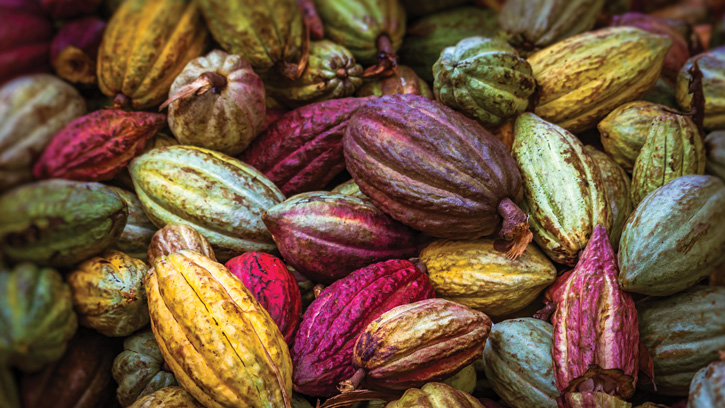The Unsung Virtues of Cocoa Honey
Science Forward | RESEARCH
The cocoa industry produced nearly 4.9 million tons of cocoa in 2020, most of which is used for chocolate. However, cocoa production also generates many byproducts that mostly are treated as waste. But new research from Brazil suggests some of those byproducts could be exploited as ingredients or food products in their own right.
One example is cocoa honey, which presents a novel flavor and has potential both as a stand-alone product and as an ingredient. Recent research identifies cocoa honey’s potential to provide a nutritional food to help meet food security and improved nutrition as part of the United Nations Sustainable Development Goals, and help the chocolate industry improve its environmental sustainability.
Nutrients and Characteristics
According to Jacqueline Takahashi, professor in the Department of Chemistry at the Universidade Federal de Minas Gerais and co-author of a recent research paper published in Future Foods, cocoa honey has a unique flavor profile—sweet and slightly acidic, and a little like the taste of cocoa. It’s also moderately viscous.
Cocoa honey is produced when the cocoa fruit is cut open to remove the seeds and pulp. The contact with air triggers a fermentation process, which is necessary to develop the seeds’ flavors. The juice—“honey”—is from the pulp liquifying due to enzymes acting on its pectin. One estimate included in Takahashi’s research puts cocoa honey amounts at 0.59 kg for every kilogram of dried seeds.
The liquid contains minerals and nutrients including calcium, magnesium, phosphorous, iron, potassium, zinc, and vitamin C. It also has carbohydrates, predominantly glucose, sucrose, and fructose, and its pH level ranges from 2.76 to 3.58. In addition, it has phytochemicals, like flavonoids.
Potential Uses and Stability Issues
Cocoa honey could be processed into a white sugar substitute, a sweetener, a beverage, and a gelling agent, says Takahashi. Local and indigenous communities in cocoa-growing regions have traditionally used it to make beverages, syrups, and jellies, among other products.
But while some of the byproduct is collected by cocoa plantation workers, and some is frozen to be transported, most of it is treated as waste, says Takahashi.
Stability over time is an issue that Takahashi and others are researching. Once fermentation begins, the flavor changes and the honey becomes very acidic within only a few hours.
Takahashi and her colleagues have had some success using additives and other technologies like gamma radiation to improve shelf life, but she notes the artificial additives used would likely not be accepted by the natural foods market. Takahashi and her team are also experimenting with a powder form of cocoa honey that could be sold as an ingredient. The European Food Safety Authority recently approved pasteurized and frozen cocoa pulp as an acceptable food product, which could increase interest in cocoa honey and pave the way for an international market.
Improving Cocoa Sustainability
As the majority of cocoa production occurs in rural communities using manual labor and processes, Takahashi says the mass capture of cocoa honey would require some modernization to improve collection and control contamination, such as using stainless steel equipment.
But capturing and marketing cocoa honey could provide an extra source of revenue for local communities and producers—70% of the world’s cocoa comes from Ghana and Côte d’Ivoire, where cocoa farmers make about $1 and 78 cents per day, respectively. It could also help the cocoa industry become more sustainable.
And, Takahashi says, this could be the first step in putting the rest of the cocoa pod to full use. “What I see in the chemistry area is that once you have the fruit, you can use everything from it,” she says.


